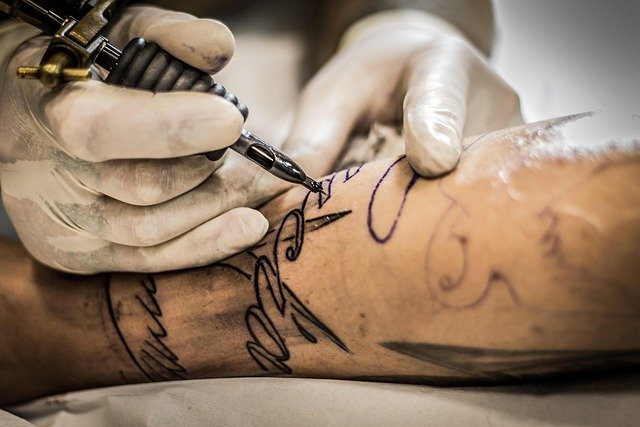Screen Glare Solutions for Home Offices and Creative Studios
Glare from windows can interrupt focused work and distort colors for creative projects. This article explores how different window film options and glazing strategies reduce glare, protect against UV exposure, and improve comfort in home offices and studios without compromising natural light or design intent.

Windows bring daylight and views into home offices and creative studios, but unmanaged glare can reduce visibility, distort colors, and increase eye strain. Effective screen glare solutions balance light control with visual comfort. This article reviews how glass treatments, film types, and installation choices address glare while also considering heat, UV protection, privacy, energy impacts, and ongoing maintenance. Practical considerations for compliance and automotive parallels are included for readers comparing options across different settings and needs.
How does glass film reduce glare and UV?
Glass film works as a retrofit layer on existing glazing to cut reflected and transmitted light that creates glare. Films can be engineered to reduce specific wavelengths, including harmful UV, which fades materials and can contribute to eye discomfort. By selecting a film with a neutral visible light transmission (VLT), you can preserve daylight while reducing sharp reflections on screens. Many films also block a high percentage of UV radiation, protecting furnishings and artwork in creative spaces. When evaluating products, look for manufacturer data on UV blocking percentages and visible light performance to match the needs of your space.
What solar and heat benefits does tinting provide?
Solar control films address both glare and thermal gain. Solar films reduce the amount of infrared and shortwave radiation that enters through glass, which lowers interior heat buildup and eases cooling loads. In home offices where computers and monitors generate additional heat, solar control can stabilize indoor temperatures and reduce HVAC cycling. The extent of heat reduction depends on film properties and window orientation: south- or west-facing glazing often benefits most. Consider energy implications alongside visual comfort; reducing heat can improve occupant comfort and contribute to overall energy efficiency.
Should I choose ceramic or dyed film?
Choosing between ceramic and dyed films involves trade-offs in optical clarity, heat rejection, and longevity. Dyed films are typically more affordable and can reduce glare and some solar gain, but they may fade or bubble over time. Ceramic films use nonconductive particles to offer high clarity, strong heat rejection, and stable color performance; they tend to perform better when accurate color rendering is important for creative work. For tasks that demand precise color accuracy—photo editing, painting, or design—ceramic options often maintain truer colors while mitigating glare. Match the material choice to priorities like visual fidelity, budget, and expected lifespan.
How does tinting affect privacy, security, and energy?
Tinting can enhance privacy by limiting exterior visibility during daylight and reducing interior silhouettes at night when combined with interior lighting strategies. Some films add a security layer by holding shattered glass together, reducing the risk of injury from broken panes. Energy impacts are twofold: certain films lower cooling demand by rejecting solar heat, while those that reduce visible light too much may increase lighting energy use. A balanced approach selects films that optimize solar heat rejection without excessively dimming the workspace. Consider double-glazing or low-emissivity glass combinations where available to improve energy performance alongside film solutions.
What to expect from installation and maintenance?
Professional installation ensures film adhesion, correct edge sealing, and absence of bubbles or creases that can worsen glare or reduce lifespan. During installation, installers assess glass condition and framing to recommend compatible films. DIY kits exist, but they require careful surface preparation and steady technique. Maintenance for films is straightforward: use non-abrasive cleaners and soft cloths, avoid ammonia-based products unless the manufacturer permits them, and inspect edges annually for lifting. Proper maintenance extends service life and preserves glare-reduction performance. Keep documentation for warranty and future compliance checks.
What compliance and automotive considerations apply?
Local building codes and workplace guidelines may regulate visible light transmission and reflectivity for certain occupancies; check compliance requirements for home offices that serve as registered business premises. Fire safety and egress glazing standards can also affect which film types are acceptable for specific windows. Automotive tinting shares common materials and principles—solar control, ceramic options, and privacy films—but vehicle regulations often strictly limit tint darkness and reflectivity. When selecting films, review local regulations for both buildings and vehicles to ensure installations meet legal standards and do not impair safety or certification.
In summary, screen glare solutions for home offices and creative studios hinge on choosing the right combination of glass treatments and films to reduce glare, block UV, control heat, and maintain accurate color. Ceramic films offer higher optical clarity for color-sensitive tasks, while dyed options can be a budget-conscious choice. Consider installation quality, maintenance practices, privacy and security benefits, and applicable compliance rules when planning upgrades to glazing or adding film. Thoughtful selection and professional installation can preserve natural light and views while improving comfort and visual performance.






